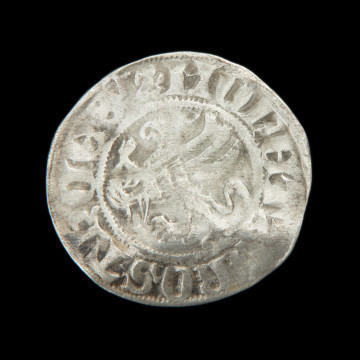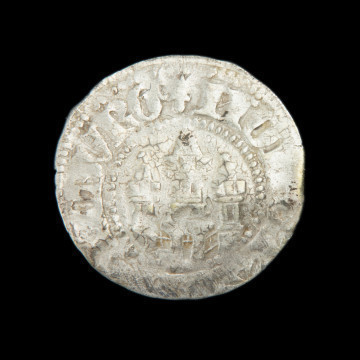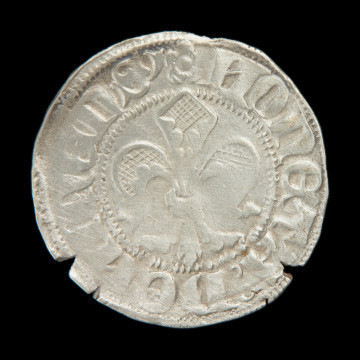
Witten
1405 — 1449
National Museum in Szczecin
Part of the collection: Szczecin treasure from Podzamcze
The beginnings of minting in Western Pomerania date back to around 1170 when the dukes of the Griffin dynasty began minting their coins, initially in capital centres and towns of great economic importance, such as Kolberg (Kołobrzeg), Stettin (Szczecin), Prenzlau (Przęcław), Demmin (Dymin) and Cammin (Kamień). However, the ducal minting was very weak. In the 14th - 15th centuries, cities started to dominate the mass production of money. Different types of coins were minted in the city mints. At the end of the 14th century, these included wittens, whose face value was higher than denar. They were minted from high-quality silver (930/1000), weighed over 1 gram, and were worth 4 Lübeck denars. At the turn of the 14th - 15th centuries, wittens became the most common means of payment in the Baltic Sea basin. Together with coarse pfennings, they were part of the so-called treasure from Podzamcze in Szczecin, discovered in 1999. One of the wittens from the treasure was minted in Wolgast (Wołogoszcz) - the capital of the Wolgast district in the Pomeranian Duchy, during the reign of two Wolgast dukes from the Griffin dynasty: Warcisław IX (?-1457) and his brother Barnim VII (1403-?). It is evidenced by the inscription on the obverse: MONETA DUC WOLGA and a walking griffin, the symbol of the House of Griffin. On the reverse of this coin, there is a religious inscription: DEUS IN NOMINE TU (God, in Thy Name).
Małgorzata Peszko
Dimensions
cały obiekt: diameter: 1,8 cm
Object type
coin
Creation time / dating
Creation / finding place
Identification number
Location / status

1405 — 1449
National Museum in Szczecin

1370
National Museum in Szczecin

XV wiek
National Museum in Szczecin
DISCOVER this TOPIC
Castle Museum in Łańcut
DISCOVER this PATH
Educational path